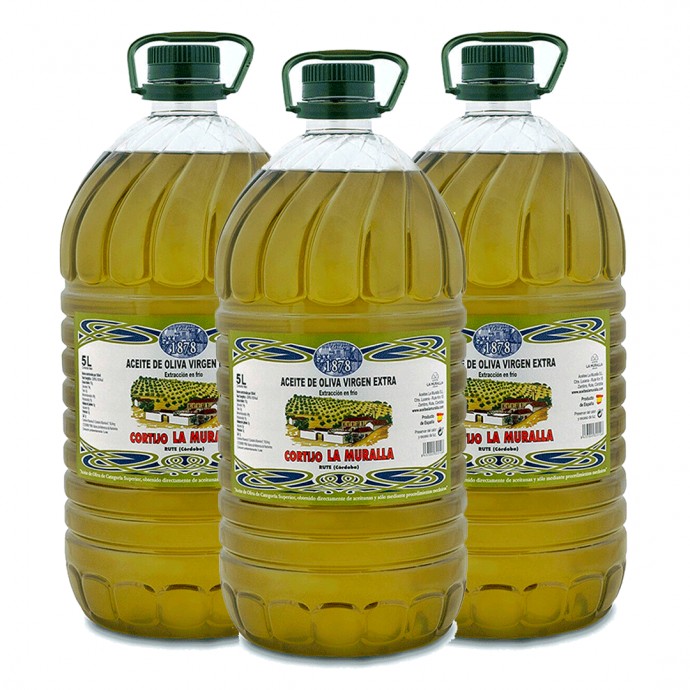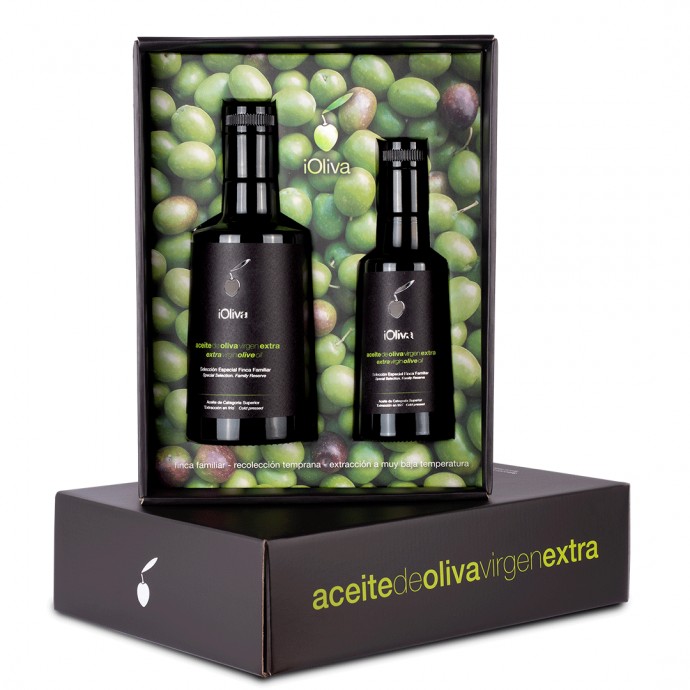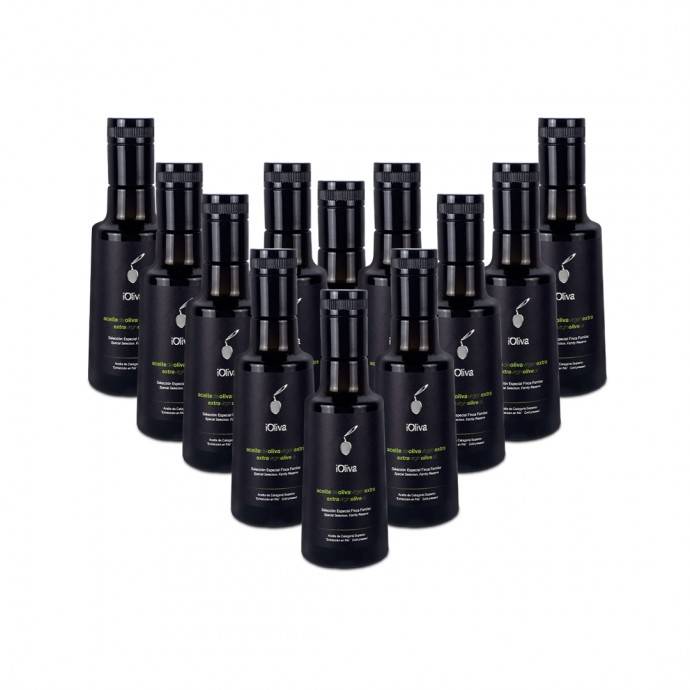
Types of Olive Oil: Complete List
S
These types of olive oil are classified based on their quality and acidity level. Below, we explain the characteristics and differences of each one.

Olive Oil (OO)
This oil is marketed under the labels "mild" or "intense," but it is actually a blend of refined olive oils topped with virgin olive oils to enhance its organoleptic characteristics. Technically, it is not comparable to higher quality oils, as it is not strictly made from olive juice.
Virgin Olive Oil (VOO)
It is a natural product, although it may have organoleptic defects. It is of good quality, though inferior to extra virgin olive oil. It is also obtained solely by mechanical means without the intervention of chemical treatments or refining, but it may exhibit slight defects in taste or aroma. It is an excellent option for those seeking a healthy and flavorful olive oil but who do not require the excellence of EVOO.
Extra Virgin Olive Oil (EVOO)
This is the highest quality oil. It is extracted from olives at their optimal ripeness and is produced solely by mechanical means, without refining or additives. The polyphenols present in extra virgin olive oil and its low acidity are responsible for a wide variety of beneficial effects. Its organoleptic qualities are impeccable, enhancing any culinary creation.
Lampante Virgin Olive Oil (LVOO)
This type of oil results from using olives that have fallen to the ground due to weather damage or diseases, and it exhibits poor qualities. Therefore, it is not advisable for human consumption and is not marketed as is.
From this LVOO, refined olive oil is obtained by undergoing a refining process using very intense and severe chemical and physical methods to eliminate all unwanted components of acidity, smell, and taste. The final product is a type of olive oil that has virtually no flavor, odor, or color and is used to blend with virgin olive oils to produce Olive Oil (OO).
Olive Pomace Oil (OPO)
t is obtained from the pomace of the olive, which is a byproduct of olive oil production. It consists of pulp, skin, stone, and remnants of oil.
This pomace is transported to factories known as orujeras, where a crude oil called pomace oil is extracted. This oil is not suitable for consumption and requires a refining process. Refined Olive Pomace Oil is an oil devoid of flavor, odor, and color. This oil is mixed with small percentages of virgin olive oils and strong flavors and aromas, and it is marketed under the name Olive Pomace Oil.
Classification by Acidity and Flavor
Olive Oil: It must have an acidity of less than 1.5%. It can be found under characteristics like "mild" or "intense," although we should know that its flavor cannot be compared to that of virgin oils.
Virgin Olive Oil: It must have an acidity equal to or less than 2%, and its organoleptic qualities are good, but they may have defects.
Extra Virgin Olive Oil: It must have an acidity equal to or less than 0.8%, and its organoleptic qualities are impeccable.
Lampante Virgin Olive Oil: Its acidity is greater than 2%, and it is an oil that cannot be consumed without a refining process.
Olive Pomace Oil: It must have an acidity level below 1% and is an oil that must undergo a refining process and is blended with virgin oils to enhance its flavor.
To conclude, we remind you that at ALM, you can find the best mill oils, as well as an interesting collection of oils for gifting.





















